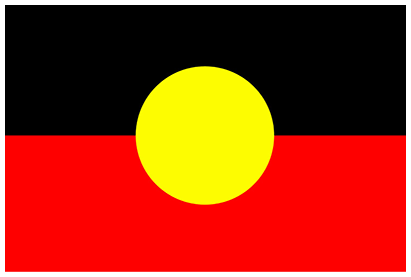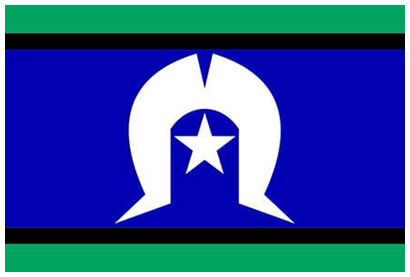collections manager
Professions in the Public Gallery Sector

emma neale
Collection Manager
Monash University Museum of Art (MUMA)
Image: Emma Neale in the Monash University Collection offsite storage facility.
Date: October 2022
COLLections manager
The Collections Manager ensures objects in the collection are conserved, tracked and appropriately registered. They oversee internal and external loans of objects in the collection. They lead documentation, cataloguing and storage of the collection and its online presence.
For information about roles within public galleries see the PGAV Fact Sheet: Staffing Levels & Position Titles
How did you get started in your career and what formal qualifications or experience do you have?
I hold a Master of Cultural Materials Conservation and a Bachelor of Arts from the University of Melbourne. My first hands-on experience in the sector was volunteering with the University’s Cultural Collections during my undergrad. These projects exposed me to a diverse range of objects and materials, and provided foundations in cataloguing, object handling and re-housing to conservation standards. This experience then led to my first paid positions at the University of Melbourne’s Baillieu Library and the Grimwade Centre for Cultural Materials Conservation.
Since graduating, I’ve held positions with the Performing Arts Collection at Art Centre Melbourne and in the registration department of the National Gallery of Victoria, leading a team responsible for the management of the NGV’s permanent collection.
I have been at Monash University of Art (MUMA) since the start of 2019, and in this position I constantly draw on my experience in both the conservation and registration fields.
What does your role as Collections Manager encompass?
My role at MUMA is broad and keeps me very busy. The Monash University Collection holds over 2,600 artworks, 40 per cent of which are on display in 70 buildings operated by the University, located across the four Victorian campuses and in various research and University centres. This involves high levels of coordination, site assessments and artwork movement.
Further to this, I am responsible for the acquisition process, cataloguing and managing the Vernon CMS database; conducting the bi-annual inventory and tri-annual valuation projects, conservation of the collection and promotion of our collection care procedures; re-housing, long-term storage and the operations of our offsite storage facility; management of our outgoing loan program; research, writing and managing Collection based exhibitions across the campus, copyright and image reproduction requests; and management and maintenance of Monash University’s Public Art Collection.
What knowledge and skills do you think are most needed for this role?
As a Collection Manager, I am juggling many complex projects at one time — some more urgent and some needing long-term oversight. I believe I have benefitted greatly from having worked in some very busy teams early in my career, which has honed my prioritisation and negotiation skills, and of course helped in learning my own stress limits.
It is also very useful to gain experience and become familiar with Collection Management Systems in order to understand their full operational potential. Recently, we have been reviewing Vernon’s capacity for more inclusive catalogue terminology and processes, and my previous experience with both Vernon and KE Emu has been crucial.
Images:
1. Emily Floyd, This Place will Always be Open 2012, Inaugural Annual Sculpture Commission, Monash University Museum of Art 2012. Photo: Andrew Curtis.
2. Shelley Lasica, WHEN I AM NOT THERE 2022, Monash University Museum of Art, Melbourne, 16–27 August 2022. Photo: Jacqui Shelton.
What is one of the strangest things you’ve had to do in your role?
The strangest thing I have done in my career to date involved lying flat on my stomach, shoulder deep in and under an outdoor sculpture by Emily Floyd, trying to loosen a few stubborn bolts. We were moving the work due to some building renovations nearby and I lucked out by having the skinniest forearms!
What is changing in the field of collection management?
At MUMA, we are delving deep into the particularities of collecting performance art, as well as ephemeral and experiential works that often defy traditional systems of categorisation, documentation and preservation. Our Senior Curator, Hannah Mathews, is leading MUMA’s contribution to an Australian Research Council Linkage grant in partnership with the UNSW, AGNSW, NGV and Tate, London. One of the outcomes of this grant was our recent exhibition Shelley Lasica: WHEN I AM NOT THERE. For two weeks, a group of eight performers inhabited the galleries in a work that merged ideas of the new, archives, and memory, providing me with a rare opportunity to consider current methods of how dance and performance works come into the collection, in real time. I feel very fortunate to witness this major international research project unfold, and excited to embrace the anticipated outcomes, such as updated vocabulary, curatorial methodologies and collection management conventions.
What has been your career highlight so far?
Travel is always a highlight and I have been very fortunate to study overseas for extended periods of time. In 2015, I was the successful recipient of the Isabel Bader Graduate Internship, a 3-month residency at the Agnes Etherington Art Centre at Queen’s University in snowy Kingston, Canada. Just three years earlier, I travelled to New York for University of Melbourne’s month-long Art Fieldwork subject and earlier that year spent the winter at the University of Birmingham with the International Student Project Award.
My work with Monash University Collection’s time-based media artworks is another career highlight and something I am very proud of. After a thorough review of our acquisition protocols, I have developed an artist questionnaire that has been very well received so far, and as of very recently the collection is now fully digitised.
What are the key issues for public galleries into the future?
A key issue experienced by most is of course the growing climate emergency. At MUMA, we are committed to scrutinising all of our activities and seeking out more sustainable practices and materials. In the past two years, we have managed to make changes to some areas of our operation. For example, using plastic-free catering for events, reducing the amount of printed promotional materials and engaging printing companies with existing sustainability and recycling polices. We are engaged with a broader Monash University initiative, the Sustainable Workshop Action Group (SWAG), and have formed the MUMA Upcycling Network to avoid landfill by donating usable materials to Melbourne-based artists and institutions.
The Public Galleries Association of Victoria (PGAV) acknowledges the Wurundjeri Woi-Wurrung people of the Kulin Nation as the Traditional Owners of the lands where our office is located, and all Traditional Owners of country throughout Victoria and Australia. We recognise Aboriginal and Torres Strait Islander peoples enduring traditions and continuing creative cultures. We pay our respect to Elders past, present and emerging.
We are an LGBTQIA+ friendly organisation that celebrates diversity. We are committed to providing safe, culturally appropriate, and inclusive services for all people, regardless of their ethnicity, faith, disability, sexuality, or gender identity.






